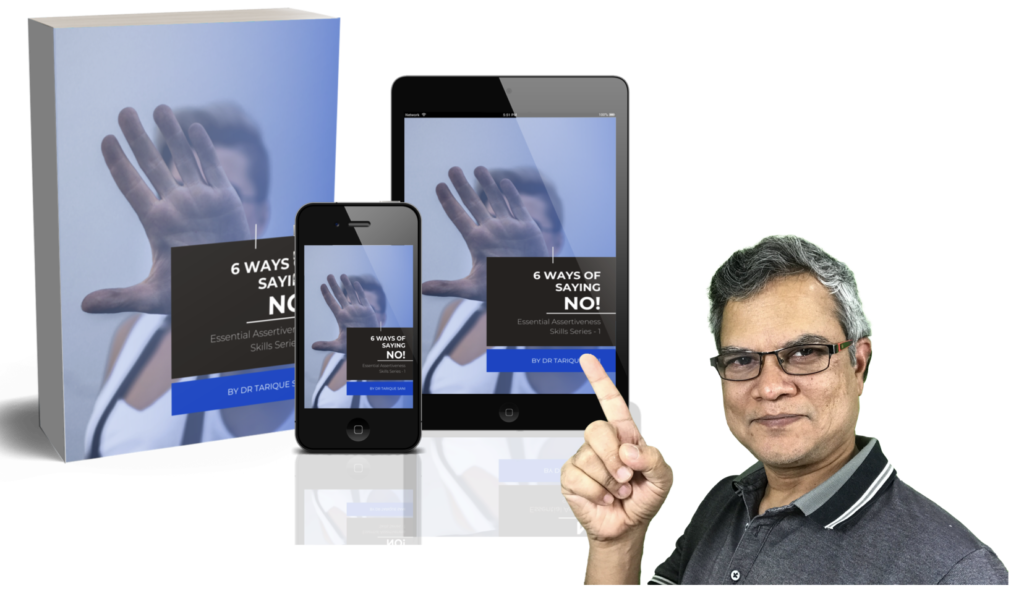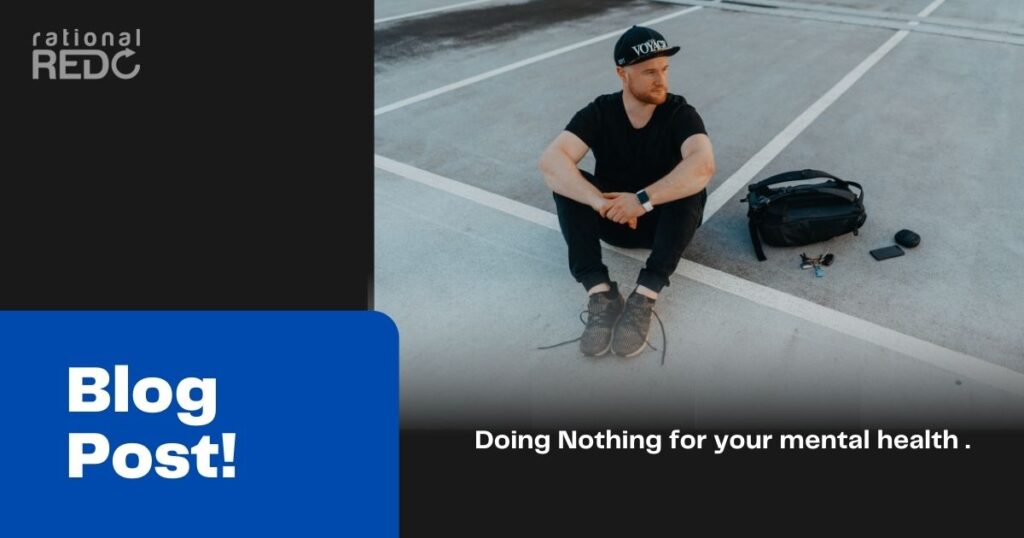The first step in self-care is Doing Nothing.
When I suggested this to Anita, a recent client of mine, she was very alarmed. She had come to me very frustrated and angry that she was not “moving forward” despite trying everything, let alone feeling “fulfilled.” She would wake up at 4:00 am and go to the gym. Then she returned, made time to read books before she cooked for the day, and left for work. Evenings she would attend online classes and work on her side hustle. She had done six courses during the last four months on self-help and mental health, but the more she learned, the more she felt she knew Nothing.
Now, she has insomnia and chronic fatigue. She came to me, in her words, to “find more energy” to be more productive.
“What can I do?” she asked.
“Learn to do nothing!” I answered.
In today’s busy world, it’s easy to forget that we need to take care of ourselves, especially our mental health. We need to recuperate and refill our tanks. We cannot run on empty.
This article shares some tips and techniques about doing Nothing and the effects it can have on your mind. This is a follow-up article to my previous one about Burnout and what you can do about it.
The Curse of Productivity
We glorify Busy!
Busyness is associated with both high status and moral goodness in our culture. Lazing around and relaxing without talking on the phone, checking emails, or consuming books, podcasts, or articles sends a message to the world that we aren’t as valuable as those with a constantly dinging phone, as intellectually engaged as those who are constantly consuming information, or as virtuous as those who are always with their nose to the grindstone.
Our work culture has become toxic — look at any job posting that lists dozens of duties and prerequisites and shove three jobs into one position.
“We are a work-consumed society, and that has generated guilt and perceptions of laziness if we aren’t working all the time,”
Busyness is addictive
You may be wondering if all this is so harmful and toxic we got to be incredibly stupid not to see this toxic culture for what it is. Well, no, you see, busyness is a drug, and we are addicted.
Not long ago in history, you had one job, one role within that job, and they would do one task at a time before moving on to the next. Now we are multitasking (or at least think so). We are busier than ever, wanting to get more done than before.
You feel good about yourself because you’re productive: it’s a dopamine release, just like any other addiction. This dopamine rush raises your heart rate and blood pressure and stimulates your nervous system; studies suggest that dopamine release promotes motivation to take on more. As a result, the vicious cycle of productivity addiction continues. While this productivity addiction may be beneficial in the short term, it is detrimental in the long run. The strain this cycle causes on the body and mind eventually leads to a less productive cycle.
Most people realize that something is wrong when despite all their efforts, their productivity falls. If you are reading this, then probably you are one of them. Therefore, my fullest empathies with you, do read on.
Doing Nothing to the rescue.
A FULL life isn’t necessarily fulfilling.
Let us go over the steps you need to take to recuperate from the stress and doing Nothing.
Become aware of the productivity trap
The first step in changing a behavior is being aware of it. If you’re always on the go, you should become aware of it and take action. It’s possible that you’re feeling exhausted, in which case you should take a break and be less productive for a bit.
“I don’t have time to do nothing,” you say. If this is the case, you may need to take a step back and reorganize your to-do list. Be realistic about how much you can do in a single day. Also, if you’re procrastinating, be honest with yourself. Is it true that you don’t have enough time or that you’re not getting things done on time? If you still have items on your to-do list at the end of the day, you may need to re-prioritize your time.
Keep an eye on your frenetic to-do list-ticking habits and commit to taking a little break.
Make time to Do Nothing.
Determine how much time you can devote to doing Nothing. Add 30 minutes a week or 30 minutes a day to your schedule/to-do list as committed nothing time. When that time arrives, do whatever feels right at the time. An essential thing to remember is to avoid multitasking or forcing work during this period of doing Nothing.
Calm produced an excellent webpage called Do Nothing for 2 Minutes if you need to start small. Try it out at donothingfor2minutes.com.
Figure out your zone of Doing Nothing
Each of us has a different definition of what it means to do Nothing. Maybe it’s just sitting there gazing out the window. But, on the other hand, it might be something you do for no particular reason, such as sketching, listening to music, reading, gardening, or playing with children.
Consider what nothing time may look like for you and how you might utilize it.
A behavior that has no specified outcome, in other words, a behavior that is not productive flips the switch for relaxation response in your mind
Gradually learn to tolerate the discomfort of Doing Nothing.
Trying something new is often unsettling at first, and it’s no different when doing Nothing isn’t yet a habit. Resist the impulse to do more by sitting in the discomfort of doing Nothing. Instead, you’ll discover that it’s rather pleasant. Doing Nothing may not look to be an easy way out, but it may be the key to recovery from a dangerous productivity addiction.
Try meditation or some mindfulness exercises.
The knowledgable amongst you must have guessed where I was leading to – Yes, Mindfulness. Many of us have no idea how to work on or with our minds. This is where Mindfulness, as well as mindfulness education, come into play. If I didn’t practice Mindfulness and simply sat there worrying, worrying, worrying, that’s not very helpful.
Mindfulness is slightly different from just mind wandering, but it need not be complicated. One approach to practicing Mindfulness is simply focusing your attention on your breath and then redirecting it back to your breath when thoughts inevitably arise, whether negative, positive, or neutral. During this practice, it is vital to suspend any judgment and remain kindly aware of what your mind is doing or not doing.
Noticing what’s going on in your mind while you’re ‘doing Nothing is an essential step toward understanding yourself, your relationships with others, and the world at large.
There are a lot of resources available to get started with Mindfulness, including apps. Insight timer, Calm, Headspace, and 10% Happier are some that come to mind.
Caution: Don’t try too hard to do Nothing
You are trying to do Nothing because you are stressed and under pressure; it would not serve any purpose if you started putting pressure on yourself to relieve this pressure. Unfortunately, this can happen easily if you are in a productivity trap. You want to get it off your to-do list. So how do you do it?
Just ease into it; as mentioned, start small. It need not be anything formal like sitting cross-legged in a quiet room. Remember, there is no specific “successful” outcome of doing Nothing, do it anyway…

Conclusion
What is this life if, full of care,
W.H. Davis
We have no time to stand and stare?
Thus went a poem which we were taught in school. The full relevance of it I realised only much later in life.
I hope this article has enthused you and given enough information to start with your stress reduction. If you want more information about burnout relief, you can read my article on Burnout First Aid. I also take one-to-one sessions to overcome and prevent Burnout. Finally, if you have more questions you want to discuss, come to have a virtual coffee with me.
Download Free eBook
‘6 ways to say NO!’


I help IT executives overcome anxiety, overwhelm and procrastination, unleashing their potential using 1:1 CBT sessions | Assertiveness Training | Burn-out Prevention | Beat Perfectionism | Crush Imposter Syndrome
